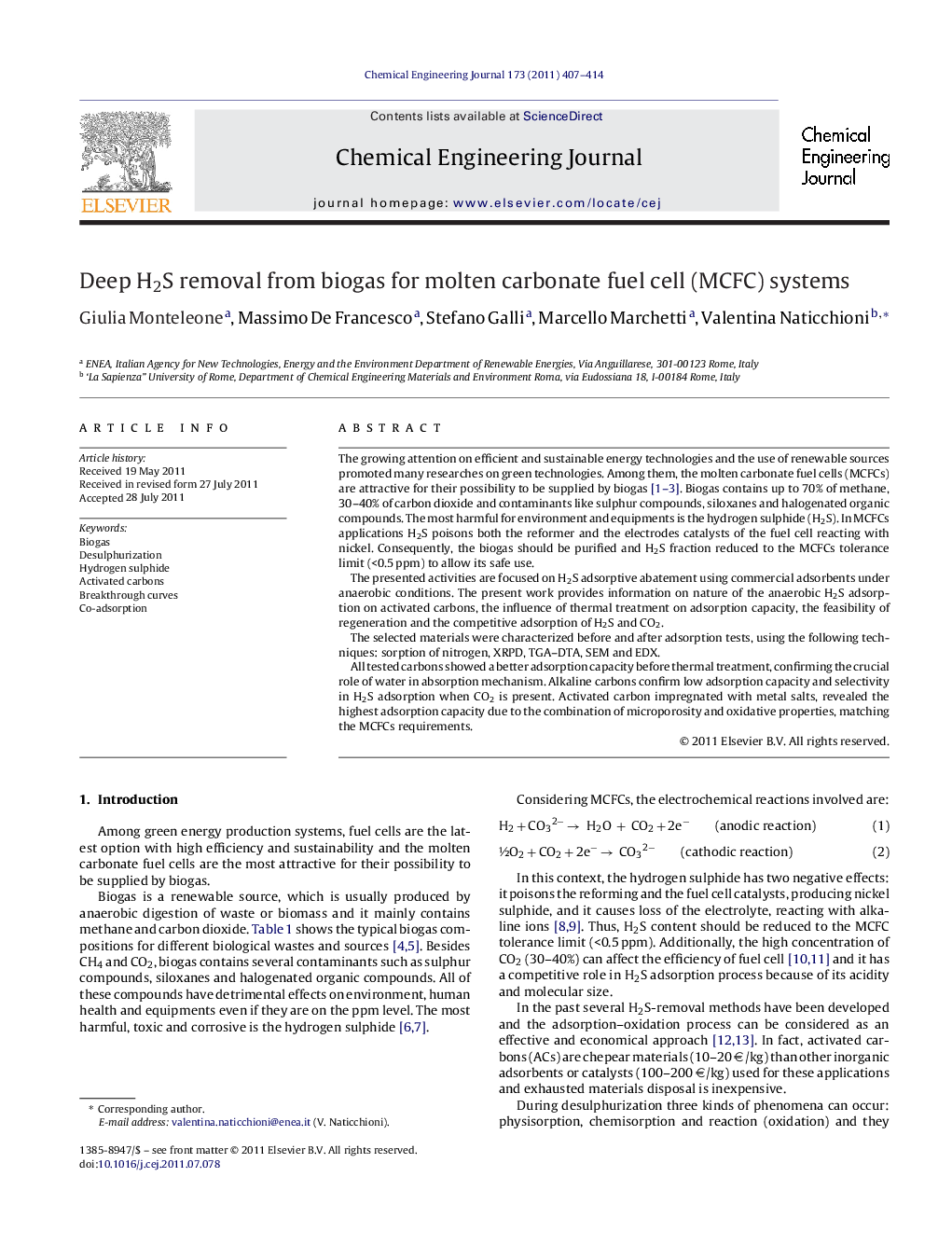| کد مقاله | کد نشریه | سال انتشار | مقاله انگلیسی | نسخه تمام متن |
|---|---|---|---|---|
| 150723 | 456456 | 2011 | 8 صفحه PDF | دانلود رایگان |

The growing attention on efficient and sustainable energy technologies and the use of renewable sources promoted many researches on green technologies. Among them, the molten carbonate fuel cells (MCFCs) are attractive for their possibility to be supplied by biogas [1], [2] and [3]. Biogas contains up to 70% of methane, 30–40% of carbon dioxide and contaminants like sulphur compounds, siloxanes and halogenated organic compounds. The most harmful for environment and equipments is the hydrogen sulphide (H2S). In MCFCs applications H2S poisons both the reformer and the electrodes catalysts of the fuel cell reacting with nickel. Consequently, the biogas should be purified and H2S fraction reduced to the MCFCs tolerance limit (<0.5 ppm) to allow its safe use.The presented activities are focused on H2S adsorptive abatement using commercial adsorbents under anaerobic conditions. The present work provides information on nature of the anaerobic H2S adsorption on activated carbons, the influence of thermal treatment on adsorption capacity, the feasibility of regeneration and the competitive adsorption of H2S and CO2.The selected materials were characterized before and after adsorption tests, using the following techniques: sorption of nitrogen, XRPD, TGA–DTA, SEM and EDX.All tested carbons showed a better adsorption capacity before thermal treatment, confirming the crucial role of water in absorption mechanism. Alkaline carbons confirm low adsorption capacity and selectivity in H2S adsorption when CO2 is present. Activated carbon impregnated with metal salts, revealed the highest adsorption capacity due to the combination of microporosity and oxidative properties, matching the MCFCs requirements.
.Figure optionsDownload as PowerPoint slideHighlights
► Basicity of impregnated active carbon enhances adsorption capacity.
► Microporous component of carbon has the crucial role in H2S adsorption.
► CO2 did not affect adsorption capacity of specific activated carbon as AC1.
► Activated carbon impregnated with metals can achieve fuel cell purity requirements.
Journal: Chemical Engineering Journal - Volume 173, Issue 2, 15 September 2011, Pages 407–414